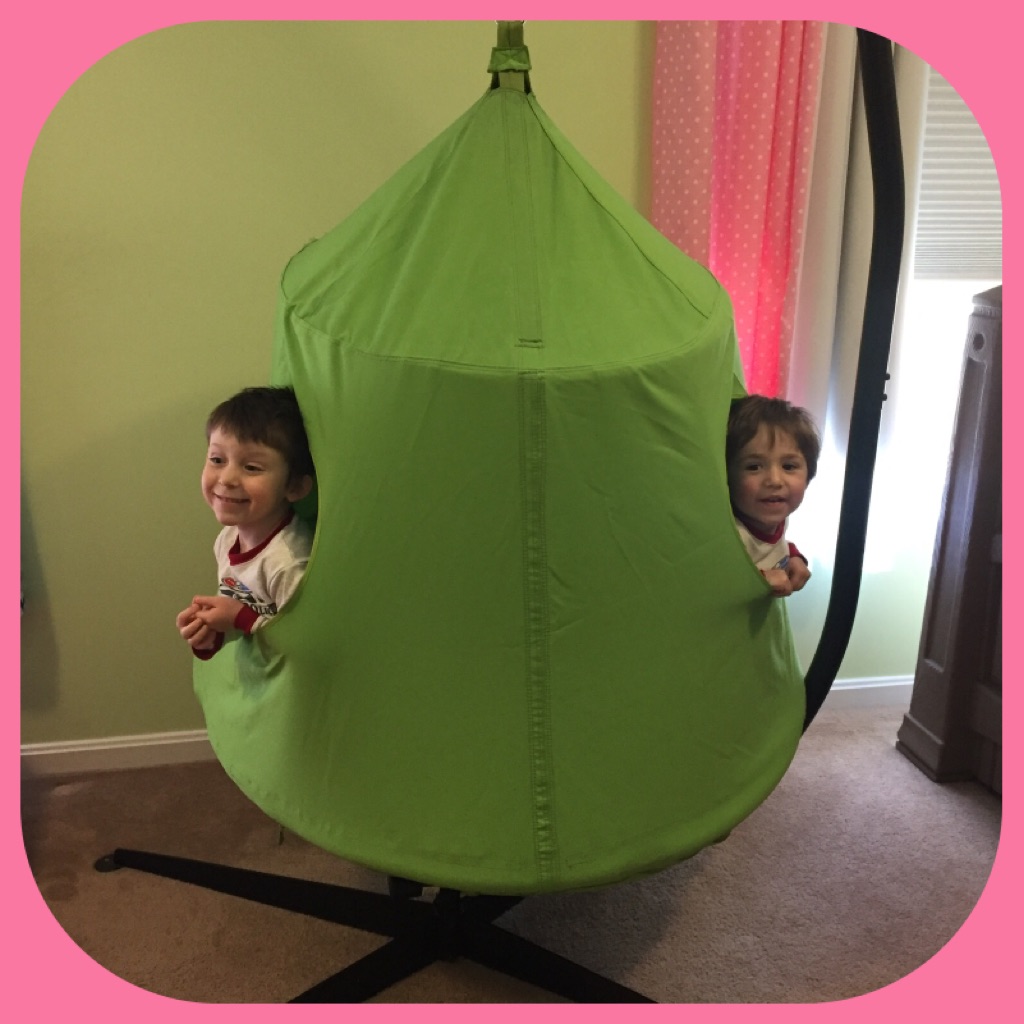
Swings seem to be a critical component for every sensory child. If they need compression, if they require spinning to calm them, if they regulate from a rhythmic swinging motion, and on and on….swings do the trick for most sensory kids. But kids respond differently to different kinds of swings depending on their needs. For example, my oldest calms herself from spinning, so she requires a pod style swing so she can spin in the dark and laying in a fetal position. Whereas my middle would puke if he spun. He requires a more back and forth motion, open style swing to calm himself.
As always, the most important thing is you pay attention to the needs of your child. If your child is in Occupational Therapy, ask the therapist what style of swing calms them. Because there are types of swings that stimulate children too, so be careful if you are looking to calm and end up over stimulating. Here are a variety of swings….some I have tried and some my kids have tried in O.T. Make the best decision for your child.
Sensory4U therapy swing is your typical compression style swing that you will see in almost every occupational therapy office out there. It’s because it offers a variety of senses to the child. Kiddos can be completely enveloped by the swing, getting that deep compression feeling they desire. They can use the swing to flip, spin, or swing. There are companies offering this style of swing using small ropes. Be careful as young kids can easily get their necks, arms, and legs stuck in the small ropes. This style of swing is safe for all ages. It strengthens muscles, coordination, and balance. A go-to swing for all kids.
Though this may seem like a porch style swing, for kids who are sensitive to spinning, this makes a great option. This style of swing does not offer deep compression, but does offer a supportive style chair that swings back and forth, offering that comforting rocking motion to help calm. If your children are very small, you may want to keep a close eye because there are ropes they could possibly get caught in if they are active and climbing. But with this kind of swing you can sit with your kiddos and swing with them….though I’m sure you’ll be asleep before them 🙂
If your child desires the compression of a therapy swing but requires more stability, try this pod swing. It has the compression, but also has a soft cushion that offers the stability their core muscles may require to sit up. The cushion can be removed for more compression and also to wash the swing
This is the swing my oldest used for the longest time. She required a spinning motion to calm her, but also needed to be in a dark space. This hugglepod worked perfectly for her. She was able to close herself into it, push off the hammock stand, and spin herself for 3 minutes until she felt calm.
If your child is like my middle child and gets sick very easily from spinning, try this back and forth spinner swing. They are not enclosed so they won’t get ‘sea sick’, can swing in a regular back and forth motion, but can also activate their core muscles. My middle guy is able to even lay on the swing and rock himself to sleep.
This platform swing is what you will see in most occupational therapy facilities as it offers a variety of movements. It is like the saucer/spinner swing and is very calming to most kiddos. If you need it to spin, you will need to purchase a separate swivel hook for this purpose.

As far as how to hang your indoor swing….I’ve tried these two hammock chair stands and have great success with both.
The C Stand style of chair hammock works great for keeping the poles out of the way. But the legs can easily be tripped on and hurt your feet with you do so.
This adjustable hammock stand is great for rooms with shorter ceilings, or to help lower the height of the swing for your kiddos. It also doesn’t have pointy legs you can stub your toes on. But honestly, either stand works great. I have both and have had no problems with either stand.